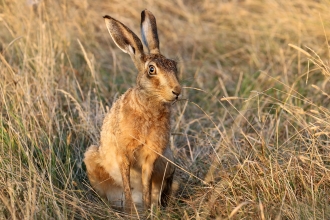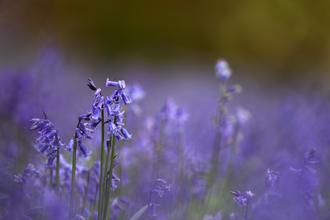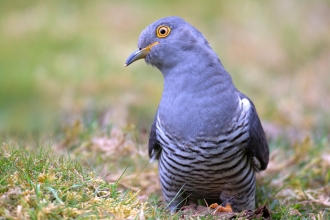From beautiful bluebell walks to peaceful strolls around wetlands full of breeding waders, here are eight places to head for spring walks in Lancashire and Manchester.
Eight of the best spring walks in Lancashire and Manchester
Peter Cairns/2020VISION
Boilton Wood by Helen Wilson
Brockholes Nature Reserve, Preston
Brockholes is a fantastic place to visit at any time of year, but spring puts on a particularly special show. Boilton Wood is brightened by a riot of wildflower colour: bobbing bluebells, bright yellow lesser celandines, beautiful primroses and delicate wood anemones spring up to delight visitors, spring bees and butterflies. Take the two-mile ‘Reserve Trail’ to appreciate this blossoming ancient woodland as well as the lakes, pools and grassland that make up this peaceful nature reserve. Keep your eyes peeled on early morning visits during March and April and you might even witness boxing hares!
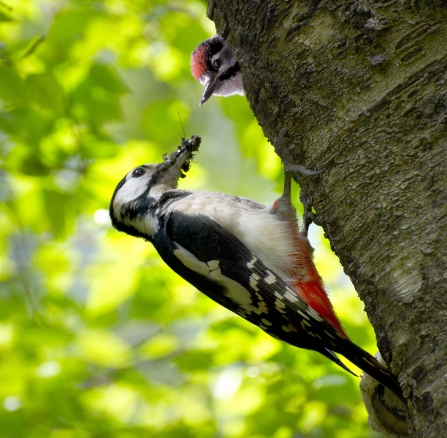
Great spotted woodpecker by Alan Price
Aughton Woods, Lancaster
This magical woodland is a great place to appreciate that iconic spring flower, the bluebell. Azure carpets of bluebells grow alongside primroses, opposite-leaved golden saxifrage, wood speedwell and foxgloves, while chiffchaffs, nuthatches and pied flycatchers flit overhead.
Aughton Woods is nestled right alongside the River Lune, so don’t miss a walk out of the trees and into the stunning Lune Valley, which has inspired writers and artists from Wordsworth to Turner.
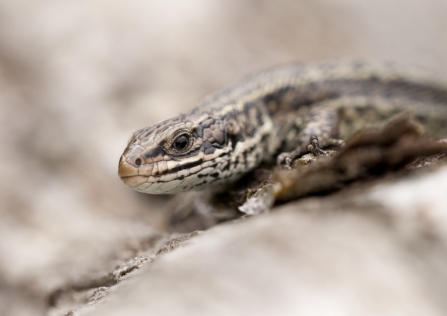
Common lizards thrive on lowland and upland peat habitats. Image by Ross Hoddinott/2020VISION
Haskayne Cutting, Ormskirk
This seven-hectare secret garden leaps into life during spring. Delightfully fluffy willow catkins slowly reveal bright yellow clusters of ripe pollen whilst wildflowers including northern marsh orchids, cuckooflower, marsh marigolds, common vetch and yellow rattle bloom on the ground below. This diversity of plant life sees an eruption of butterflies as the weather warms up: common blue, orange tip, large skipper, meadow brown, speckled wood and gatekeeper butterflies all forage here. Listen out for yellowhammers ordering ‘a little bit of bread and no cheeese’ between March and April, and keep your eyes peeled for common lizards basking on fence posts at the old railway station.
Foxhill Bank by Alan Wright
Foxhill Bank, Oswaldtwistle
History and industry meet natural beauty in this hidden oasis. Foxhill Bank nestles in a shallow valley in the heart of Oswaldtwistle and is the ideal place to see a number of spring wildlife spectacles, including frogs and toads spawning in tranquil pools. Hordes of dragonflies emerge in late spring, and dippers can be seen bobbing on the most secluded sections of Tinker Brook, where they breed.
When the spring sun is shining, one of the best things to do at Foxhill Bank is walk up the avenue of lime trees in the woodland that would have lead up to the former mill owner’s house.
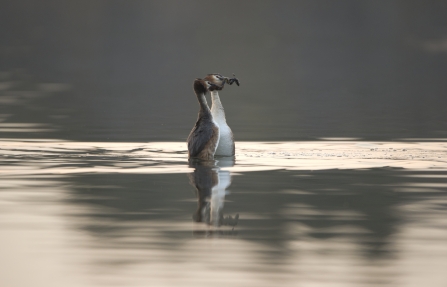
Great crested grebes by Andrew Parkinson/2020VISION
Mere Sands Wood, Rufford
One of our most unmissable spring spectacles can be enjoyed at Mere Sands Wood near Ormskirk. Great crested grebes perform their elegant courtship ritual on the lakes of this peaceful nature reserve, usually between February and April. To try and see them in action, visit early in the morning and let the footpaths guide you through the Mere Sands Woods’ mix of broadleaved and coniferous woodland, where six bird hides offer cosy places to take a seat beside the lakes.
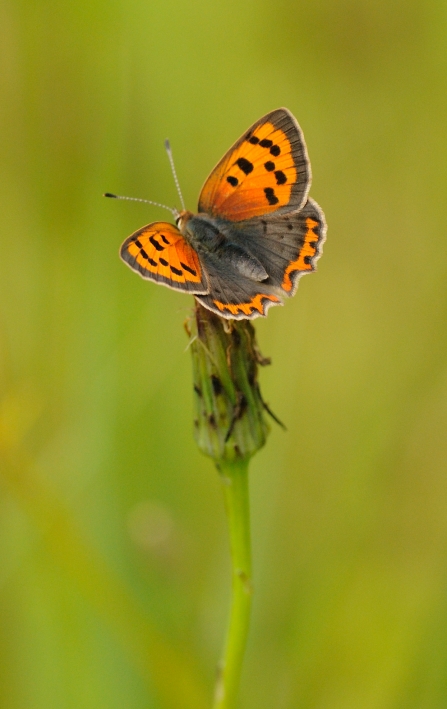
Small copper by Amy Lewis
Heysham Nature Reserve, Morecambe
Step onto Heysham Nature Reserve as spring meets summer and the birdsong is almost deafening. Migrants like sedge warblers and chiffchaffs joint the resident greenfinches, linnets and other birds in a beautiful chorus that follows you along each footpath. Then there are the insects – small copper, common blue, speckled wood and red admiral butterflies feed ahead of the summer rush of dragonflies and burnet moths. Look out for the bright yellow heads of marsh marigold in the wetter woodland areas.
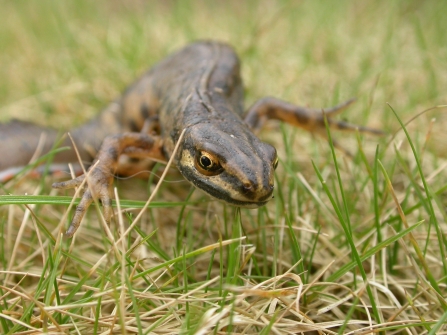
Smooth newt by Philip Precey
Moston Fairway, Manchester
You’d never guess that this little nature reserve is just a mile from Manchester city centre, especially during springtime. The air fills with the multi-layered calls and melodies of different birds, and as you stroll through the woodland you can hear blue tits, linnets, reed buntings, coal tits and goldfinches.
Down on the ground, frogs and smooth newts breed in the Moston Fairway’s pools. Spring is also a great time to see the first southern marsh orchids unfurling their pretty pink petals.
Salthill Quarry by Alan Wright
Salthill Quarry, Clitheroe
Can you believe that Salthill Quarry once lay at the bottom of the ocean? This idyllic nature reserve now sits loftily above Clitheroe and is the perfect place to watch new life blooming during spring.
Birds like chiffchaffs and bullfinches flit from tree to tree, and on the field next to the amphitheatre rock (post two on the walking trail) cowslips paint the grass with bright yellow beauty. Make sure you come back for a summer stroll, too, when the reserve transforms into a wildflower Eden where bird's-foot trefoil, wild strawberry, common knapweed, lady's bedstraw, scabious and agrimony dust the landscape with kaleidoscopic colour.
Where are your favourite places for spring walks in Lancashire, Manchester and North Merseyside? Let us know on Facebook, Twitter or Instagram!
If you aren’t sure where to walk to appreciate our region’s spring spectacles, click the button below and use our reserve-finder and discover a brand new wild place.


